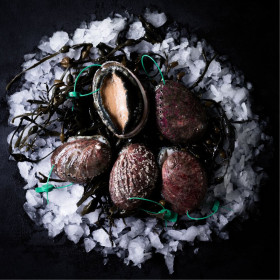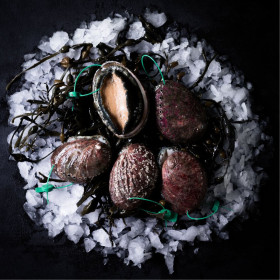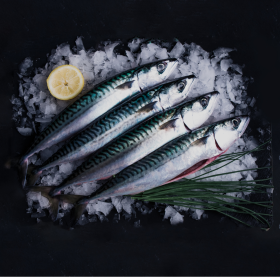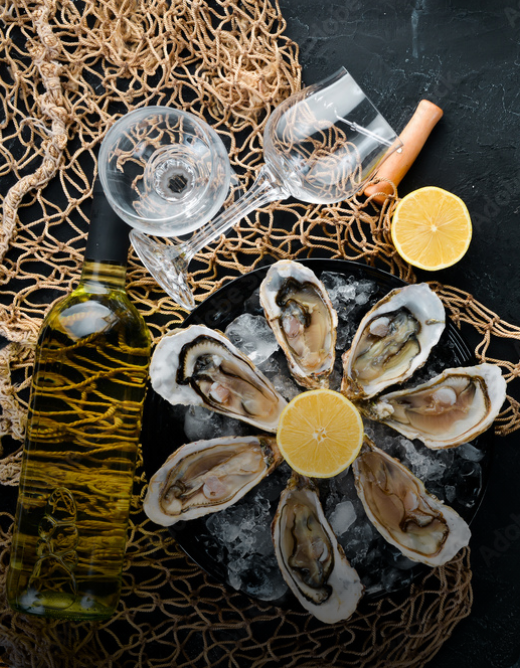Tips for Properly Preserving Fresh or Living Products
Crustaceans, shellfish, or fish, whether alive or cooked: How to keep them fresh and consume them?
Crustaceans, shellfish, or fish: How to preserve them properly? To correctly preserve seafood products before consumption, there are a few good practices to adopt:
1. Chill the products as soon as possible: Upon receiving the products, do not leave them at room temperature. Place them on the lower shelf of the refrigerator.
2. Separate the products: It is important to separate different products. Cooked whelks, for example, have a strong odor even when they are very fresh. Be sure to separate fresh products from raw ones.
3. Store the products in airtight packaging: Especially for cooked products, make sure to store them in airtight packaging to prevent them from absorbing odors from the fridge.
4. Maintain humidity for living products: Feel free to store them in a cool and ventilated place (fridge, cellar, shed), and cover them with a paper towel or a damp cloth.
5. Cook live crustaceans as soon as possible after receiving them to preserve them for later use or freezing.
Freezing: The Sea on Your Plate Whenever You Want
To enjoy the pleasures of the sea whenever you desire, freezing is the safest method of preservation. It preserves the flavor, texture, and aroma of seafood products. By buying larger quantities of seasonal products, you can ensure economical and delicious meals throughout the year.
To properly preserve all the qualities of seafood products, there are some key points to watch out for:
· Freeze the products quickly: As soon as you receive products to freeze, prepare them as soon as possible to avoid any deterioration.
· Protect the products from the cold: To prevent damage from cold or humidity, place the products in suitable and sturdy containers, such as plastic containers, freezer bags, or freezer paper.
· Organize the freezing: Only freeze the quantity of fish or seafood necessary for a meal. It would be a shame to have to defrost more than necessary! Also, don't forget to label the content and the freezing date with a label or marker.
· Optimize freezing: For quality freezing, remove as much air as possible and seal the packaging airtight.
Freezing of Mollusks and Crustaceans
The freezing process varies depending on the species.
Lobster
To freeze a whole lobster, you should first partially cook it, boiling it for 8 minutes. Once cooled, the lobster can be frozen whole in an airtight bag. When you want to consume it, put the lobster in boiling water and cook it again for 8 to 10 minutes.
For those who want to freeze only lobster meat, cook it completely. Once the lobster is cooled, remove the meat and place it in freezer bags, seal them airtight, and put them in the freezer. Lobster frozen in this way will last longer than those frozen in their shells.
Cancer Crab and Spider Crab
If the products are alive, cook them. Then, shell them and place the meat in a container suitable for freezing, sealing it airtight.
Scallops
After rinsing scallops, place them on a tray suitable for freezing. Once frozen, remove them from the tray and place them in an airtight freezer bag.
Clams, Mussels, Cockles, and Razor Clams
After rinsing and cooking the mollusks, remove the meat from their shells. Place it in a container suitable for freezing and seal it airtight before putting your mollusks in the freezer.
Oysters
It is advisable not to freeze whole oysters. Therefore, remove the oyster meat from the shells and separate it. It is ideal to use an ice cube tray to freeze the meat and then unmold it to place it in sturdy plastic bags, sealed airtight.
Freezing of Fish
All fish can be frozen. However, the freezing steps differ depending on the type of fish.
· Whole fish must be gutted and rinsed with cold water before freezing. The substances contained in the viscera are harmful and can alter the meat if not removed.
· Both small and large whole fish can be frozen on a tray and then placed in freezer bags. For fish fillets and slices, you will get better results by freezing them directly in airtight bags or containers.
Freezer Storage Period
Fish and seafood products freeze very well. Taste, appearance, and texture qualities can be maintained for several months without degradation. However, the storage period varies by species. Beyond the suggested period, fish and seafood products will still be edible, but they will lose their flavor qualities.
· Fatty fish: 3 to 4 months
· Lean fish: 6 months
· Crustaceans: 3 to 4 months
· Scallops: 6 months
· Oysters: 4 to 6 months
· Other shellfish: 3 to 4 months
Successful Thawing for Delicious Products
Proper thawing means limiting water loss and contamination. Follow these recommendations:
· Keep frozen products as long as possible: Thaw fish and seafood just before preparing them. Once thawed, they will deteriorate quickly, so don't wait more than 24 hours to cook them.
· Leave the products in their original packaging: Products should be kept in their packaging throughout the thawing process.
· Thaw in the refrigerator or in cold water: Thawing at room temperature or with hot water can alter the meat and not thaw it evenly.
· Follow the thawing time: For 500g of meat, 15 to 18 hours are required for thawing in the refrigerator. Only 30 to 60 minutes are needed in cold running water.
In case of a freezer malfunction, follow these recommendations:
· If the products are only thawed at the edges, you can refreeze them immediately without any safety issues.
· If the fish and seafood are completely thawed but kept in the cold, place them in the refrigerator and cook them within 24 hours for consumption or refreezing.
· If the products are completely thawed and have been at room temperature for more than 2 hours, or if you are unsure how long they have been thawed, discard them.





